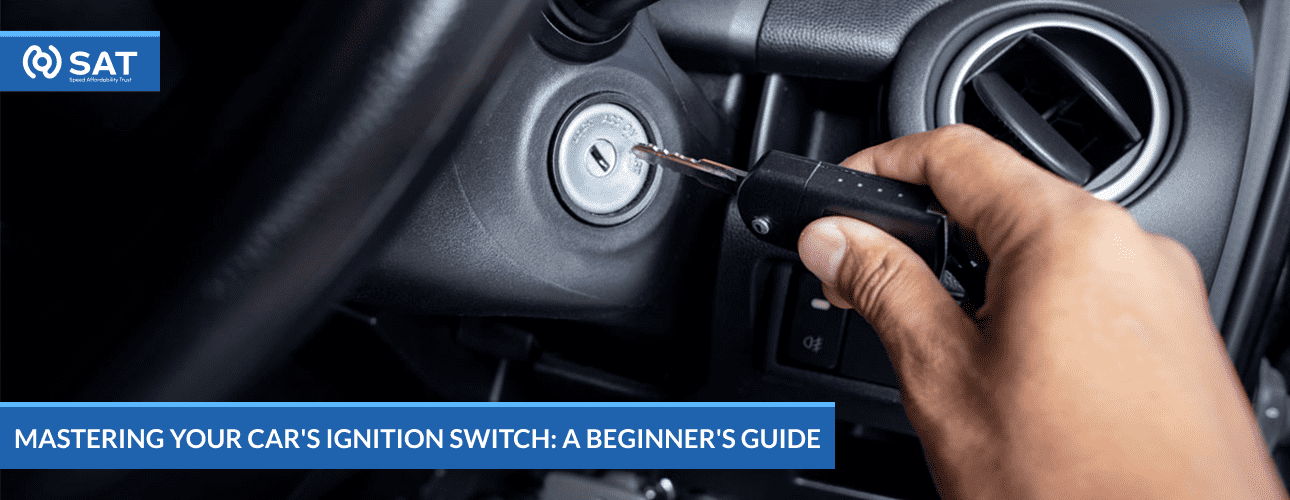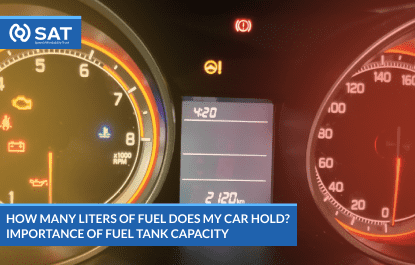
Bridgestone Vs. Michelin Tires – Who’s the Boss
Bridgestone and Michelin are the two industry giants of the tire market.

Is it too much to ask to get your car started at all in the morning? In this blog post, we’ll go through every stage of engine startup, one step at a time of ignition switch. This will help you grasp each part of the process fully. It’s nice to have no more dead batteries or waiting for AAA guys to get there. Simply start up your car with a smile, delight in that great engine roar, and you’ll always be on the go.
Let’s get started!
The key switch is responsible for all the controls of an electric circuit, which includes the vehicle’s engine, on/ off lights, and other electrical equipment. After the key is inserted and turned, the ignition switch will activate the starter motor, the fuel pump, and the ignition system. From there, the engine will start running.
By rotating the “start” key, the starter, which is responsible for cranking the engine, is engaged. Gasoline is then supplied to the ignition chamber, and a spark sets it alight. The process of combustion begins from there; therefore, the engine is running. The key is now released back to the “on” position.
A different switch adds a high accessory or ACC position, in which the ignition switch powers accessories such as a CD player, sunroof, or power windows without starting or cranking the vehicle engine. This feature is useful when you want to listen to music while the engine is turned off or roll down the windows without operating the engine.
New cars now have an “OFF” button on the ignition allowing one to shut the car off and not start its engine. Others also have built a systematic anti-theft that makes the ignition and fuel system inactive if a recognized key is applied. These safety features like an integral anti-theft system and remote start help to prevent theft and vehicle accidental starting respectively.
If your switch is not functioning properly, then you should not ignore that sign. Maybe it is coming out because of a bigger issue. Here are some of the most common problems you may encounter:
If your key fails to rotate in the ignition keyhole, the fault is most often failing the ignition cylinder. The deterioration of the performance of any valuable good often starts from being subjected to wear and tear. Why don’t you try the lubricant at the ignition, insert the key, and move it up and down? The final option would be to hire a locksmith for professional help who could ship the broken key out and replace the ignition cylinder in case the first two options do not work.
Upon turning, your key may get stuck in between the “off” and “start” (running) positions, which will show a defective ignition switch. The switch is detecting an issue; therefore it needs to be replaced. Don’t keep trying to turn the key, and it might just cause more harm.
At other times, the spark plug can be the culprit even though the switch is in perfect working condition. Cars breaking down is a bug that most electric “speakers” would encounter while driving. This might happen when the car does not start, stalls midway or there is a warning for a “check engine” light turned on. To determine the exact problem, it is advised to check out the ignition system.
Almost all ignition switch problems can be fixed by working around the trouble and eventually replacing the switch itself, which is not quite a lengthy job. Besides, if you start seeing some of the common issues of a car’s engine or if you have a particular safety concern to deal with, you might need to find a reliable mechanic who can help you out.
An unresponsive ignition system is a lengthy and unpleasant inconvenience, but you should not allow yourself to forget it because it is crucial for your safe driving. In the same way, if the switch somehow does not work properly, you should not doubt for a moment that you should take your car to the auto repair shop, where trustworthy mechanics will fix your problem. For your car repairs, not only can they assess your vehicle and replace the parts with brand new ones, but they can also take away your worries.
Well, that was all you needed to have a complete guide on your ignition switch. Even though it may at first look threatening, the key positions and their function are, in your case, the driver’s seat, giving you the chance of success. Once you’ve had some hands-on practice and are patient, you won’t even need the manual to start the engine anymore.
As you engage, do not give it a second thought that now you can impress your friends with your ignition switch expertise at parties! However, in all reality, the most important learning will be the problem-solving skills you’ll discover. At the same time, you navigate an initially challenging path and turn to your owner’s manual for help if you get lost. Learning how to take off correctly is one important stage of becoming an independent and confident car driver. Get more details on SAT
Some telltale signs that your switch may need a replacement include the phenomenon of the car stalling and not starting at all, the irregular rotation of the key, locking up the steering wheel, or the problem with the ignition switch, which is in the “on” or “start” state.
If it is necessary to swap an ignition switch, it will cost about $125 to $250 for parts and labor. As for the precise price I need to add the make, model, and year of your vehicle on it. Igniting the switch is quite a simple job that normally is done by a mechanic in 1 hour.
It is not a good idea to turn a key if the problem is connected to the ignition switch. A defective ignition interlock switch can lead to a situation where the car stops without warning, while the issues with the ignition power when you start the engine or its disappearance while driving.

Bridgestone and Michelin are the two industry giants of the tire market.

Considering the recent developments in the world order, oil prices have increased significantly over the last decade. During such times, being well-researched about your car fuel tank and its features can be extremely useful in cost-cutting. Knowing about your car’s fuel capacity may not seem too significant at face value, but such a basic factor […]

Subaru is widely known for being a highly reliable manufacturer of vehicles that are simultaneously safe and stylish. Because of Subaru Models‘ performance and reliability, these vehicles have a loyal fanbase that swears by them. However, there are some limitations with their boxer engine, and one of the faults in some Subaru vehicles is the […]